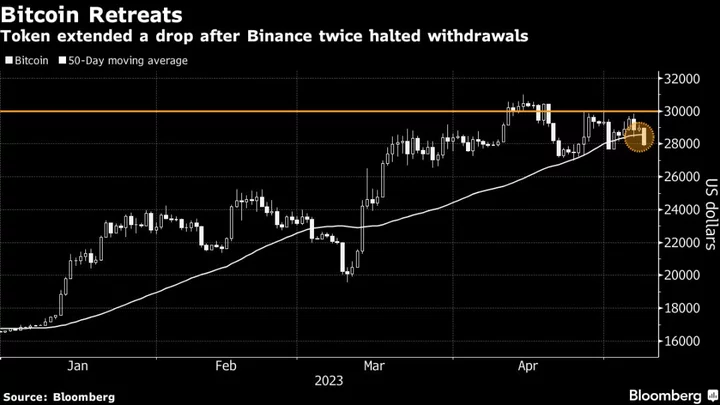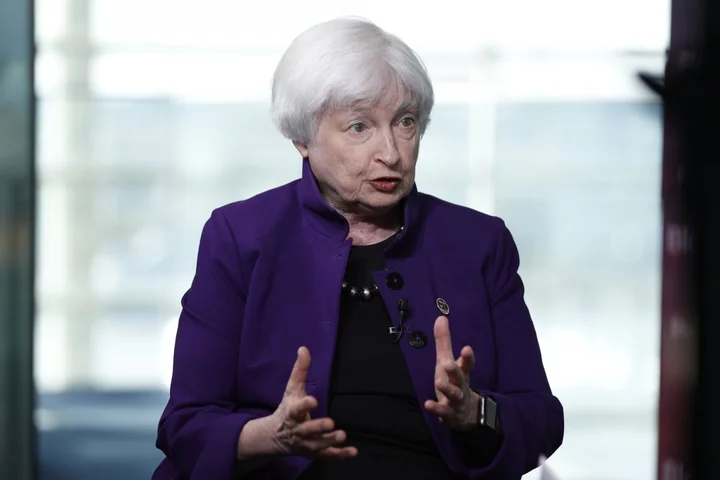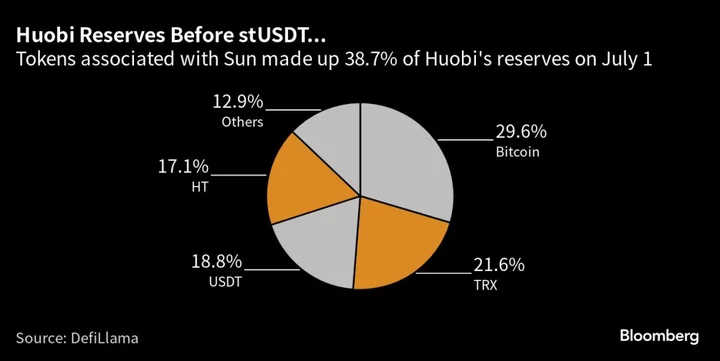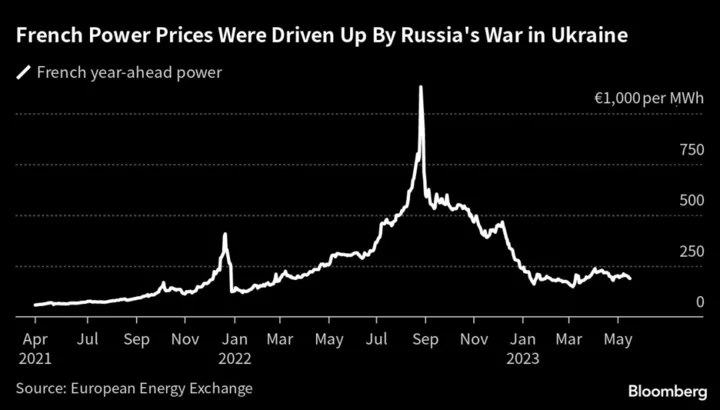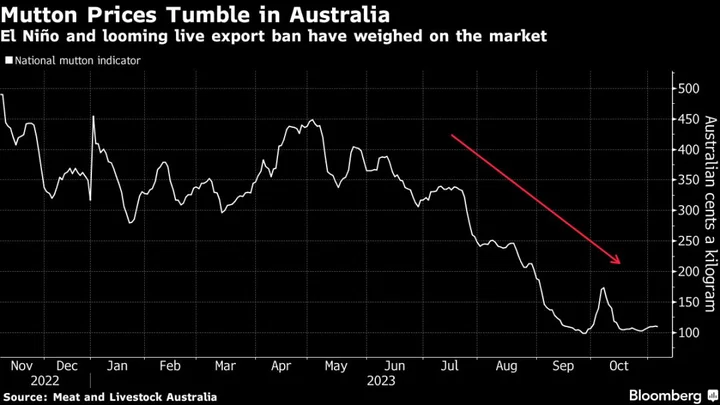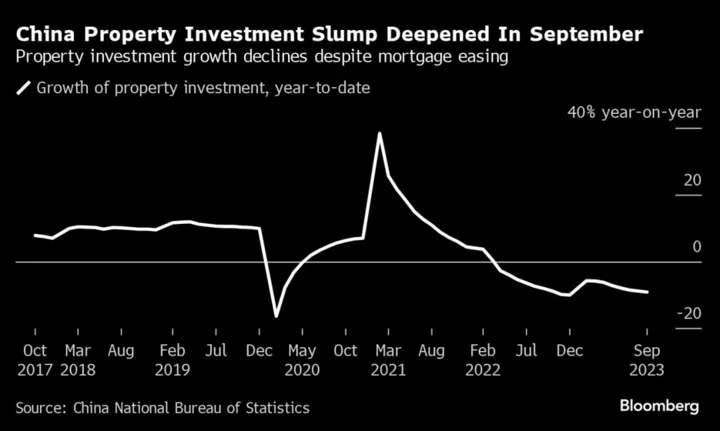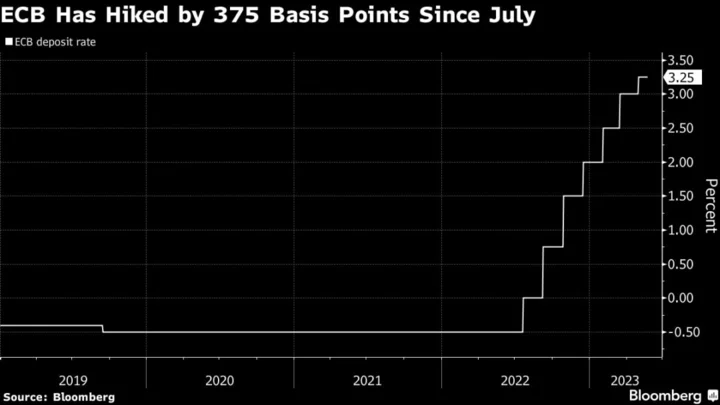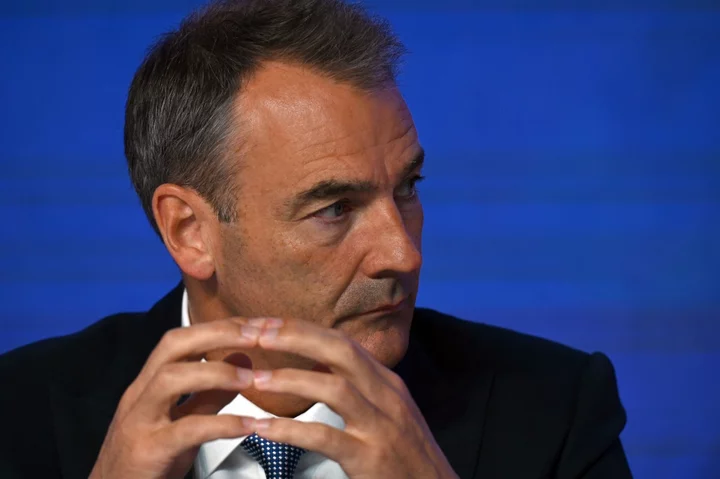The oldest cryptocurrency blockchain is being clogged up by a recent spate of Bitcoin-based memecoins such as Pepe, driving up transaction fees and renewing concern about the largest digital-asset trading platform.
Binance halted withdrawals of Bitcoin twice in less than 12 hours on Sunday, citing congestion on the network. The exchange, which is embroiled in a fight with US regulators, said higher fees have been applied to pending transactions so they get picked up by Bitcoin miners — the computer rigs that operate the network. The Bitcoin offshoots are known as BRC-20 tokens.
Memecoins such as Pepe have surged in recent weeks as traders seek to capitalize on massive price moves on the most speculative coins, which often trade at less than one cent, while market bellwethers such as Bitcoin no longer produce such outsized gains. The frog-themed coin has surged more than 3,000% since it was launched in April. Another Bitcoin-based coin Ordi, debuted this weekend, and saw its market value surge to as much as $900 million.
“The high network fees have been caused by the en-masse minting of BRC-20 token,” said Jaime Baeza, founder and managing partner at digital asset hedge fund ANB Investments.
The rise of Bitcoin-based memecoins comes on the heels of the recent launch of a protocol known as Ordinals introduced NFTs to the original crypto blockchain. These tokens are being queued up along with regular Bitcoin transactions to be processed by miners.
Bitcoin transaction fees rose to around $19 on average Monday, up from about $2 over the past month, according to data provider YCharts.
Until recently, memecoins and NFT collections such as Bored Apes and CryptoPunks were predominately based on Ethereum and served as a catalyst that helped to make that platform the world’s most commercially important blockchain.
Bitcoin, the biggest cryptocurrency, fell as much as 4.6% and was trading at about $27,900 as of 11:40 a.m. in New York on Monday. An index of the biggest 100 digital assets posted a similar decline.
Binance is by far the largest exchange in the digital-asset sector following the collapse of rival FTX last year. Trading volume on the platform exceeded $7 billion in the past 24 hours, five times as much as the next nearest platform OKX, according to data from CoinGecko.
The Binance trading halts led to speculation that investors were pulling funds from the exchange. Binance Chief Officer Changpeng Zhao called the speculation unfounded.
Last year’s crypto crash and bankruptcies like FTX undermined confidence in digital-asset platforms and skepticism continues to linger over the industry. Binance and rivals subsequently redoubled efforts to try and dispel worries about whether they have sufficient reserves.
Before the emergence of Ordinals as a new application, the Bitcoin blockchain was best known for its store-of-value and payment functions.
Ordinals led to a “massive run up in network fees and congestion,” said Hayden Hughes, co-founder of social-trading platform Alpha Impact.
The withdrawal fees charged by exchanges fell short of the fees charged by miners, said Stefan von Haenisch, head of sales trading at OSL SG Pte in Singapore.
“The queue of transactions pending verification for inclusion in the blockchain has experienced significant growth in recent days, causing an increase in transaction fees and confirmation times,” he said.
Binance on Sunday also moved about $4.4 billion worth of Bitcoin across its digital-asset wallets, based on an analysis from research company CryptoQuant. The exchange said in a tweet that Bitcoin was moved “between Binance hot and cold wallets due to the BTC address adjustments.”
Cold wallets aren’t connected to the internet, unlike hot ones, and are often viewed as a more secure way of storing digital currency.
Read more: Data Signal Binance Moved $4.4 Billion of Bitcoin Across Wallets
--With assistance from Sidhartha Shukla.
(Updates to include transaction fees in the sixth paragraph.)

